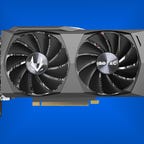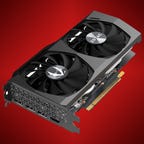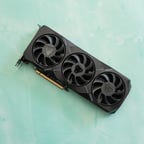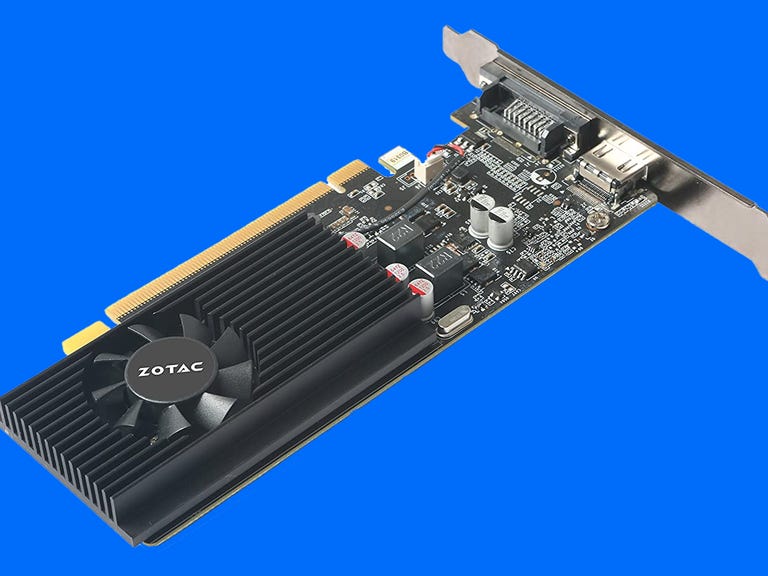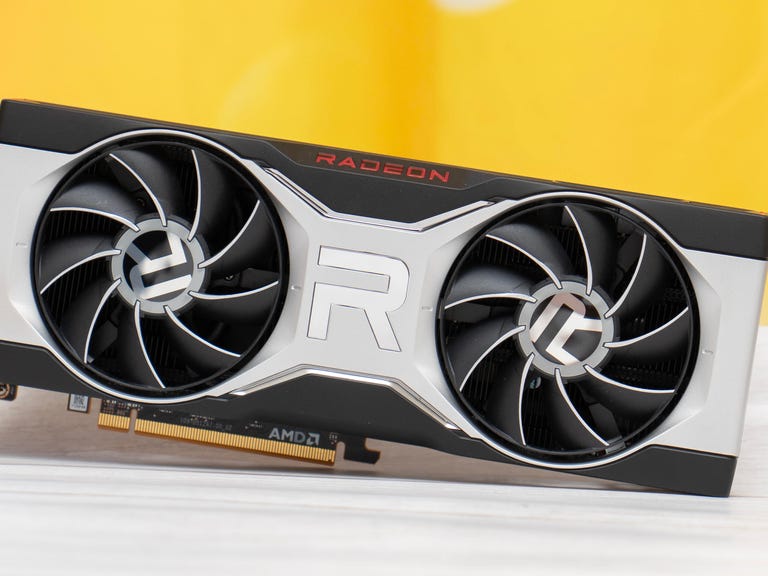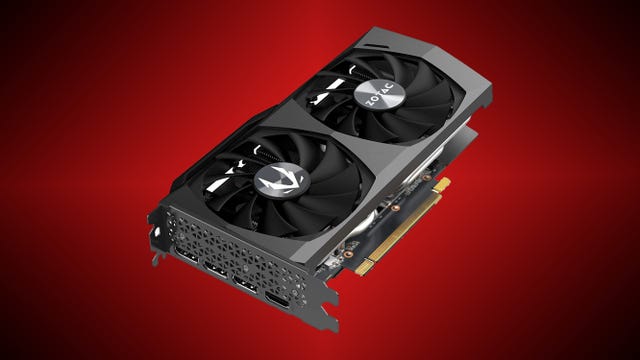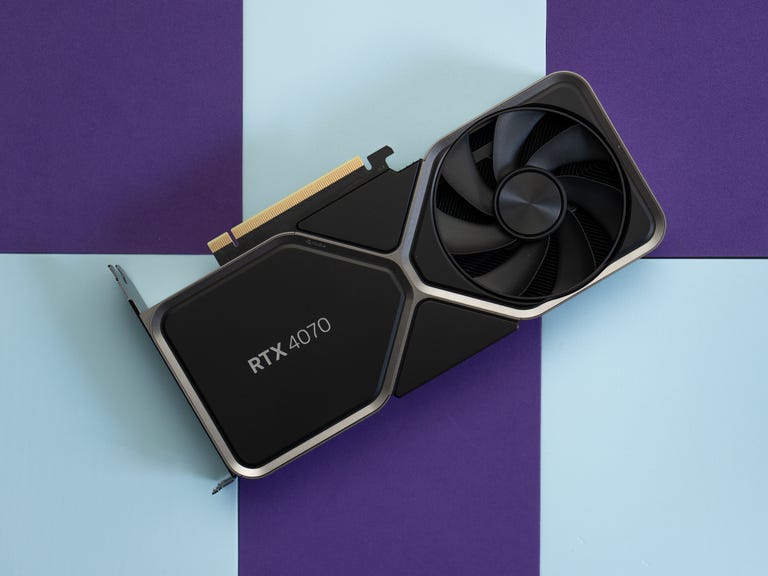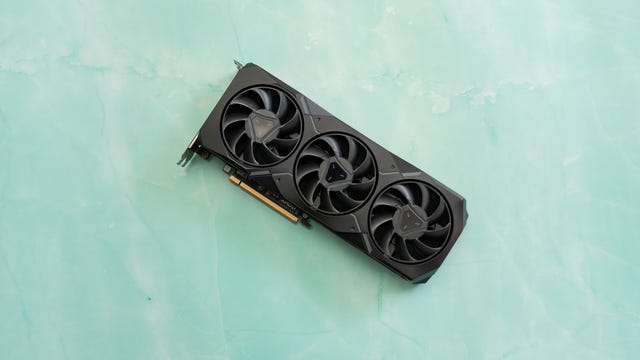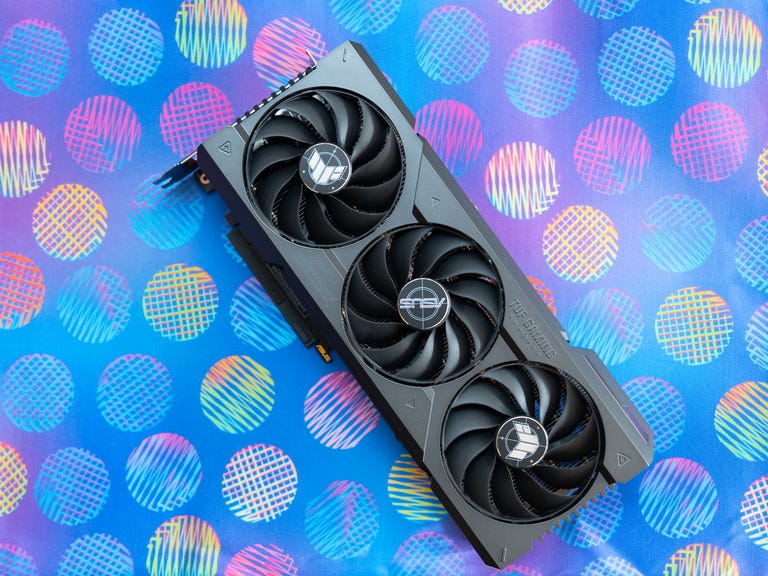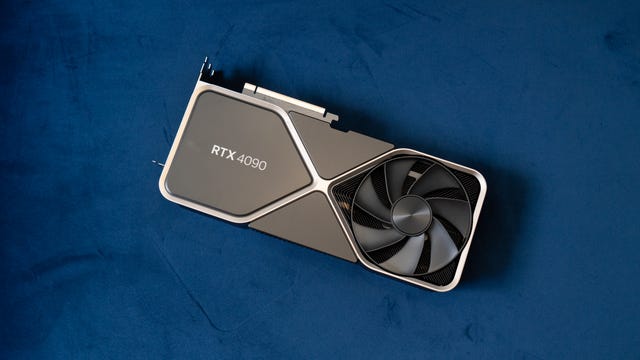<div content="LIST ITEM" superlative="Top choice for 1080p and midrange photo editing ($300-$500)" description="
This one’s a bit difficult to call at the moment, since the current generation of technologies from AMD and Nvidia for this class of card hasn’t been announced yet — though I think both are imminent. You can get last-gen cards that will perform perfectly well for these uses, and possibly older, but I hate making those recommendations without knowing what the prices will be on the newer cards, especially since the newer Nvidia Ada and AMD RDNA 3 architectures add quite a bit over their predecessors.
Still the AMD RX 6700 XT is a good meat-and-potatoes card if you need to buy something now, pretty much outperforming the rest in its price class. The AMD cards tend to get complaints about audible whining, and I admit I hear it myself periodically, so if that’s a potential issue then the more expensive RTX 3060 Ti is probably a good bet as well.
” page-position linktext linkurl can-collapse=”true” collapse-on-page-load=”true” can-truncate=”true” truncate-on-page-load=”true” offer techobjectinfo=”{"uuid":"811cb57a-41d2-4e2c-baff-43d32d21a3df","slug":"powercolor-fighter-amd-radeon-rx-6700-xt-gaming-graphics-card-with-12gb-gddr6-memory-powered-by-amd-rdna-2-raytracing","name":"PowerColor Fighter AMD Radeon RX 6700 XT Gaming Graphics Card with 12GB GDDR6 Memory, Powered by AMD RDNA 2, Raytracing, PCI Express 4.0, HDMI 2.1, AMD Infinity Cache","productType":"PRODUCT","updateType":"AUTOPID","mod":1683148852942}” overridecredit=”Lori Grunin/CNET” overridecaption=”” imagegroup=”{"uuid":"a5593d1a-f350-4f45-ac76-347a72bd8dcb","alt":"amd-radeon-rx-6700-xt-dsc01486","caption":"","credits":"Lori Grunin/CNET","imageData":{"id":"a5593d1a-f350-4f45-ac76-347a72bd8dcb","filename":"amd-radeon-rx-6700-xt-dsc01486.jpg","path":"https://www.cnet.com/a/img/resize/9e01ae4d92f81f315a64454e1348c7f479bb7d4a/hub/2021/03/09/a5593d1a-f350-4f45-ac76-347a72bd8dcb/amd-radeon-rx-6700-xt-dsc01486.jpg?auto=webp&height=500","dateCreated":{"date":"2021-03-09 23:18:24.000000","timezone":"UTC","timezone_type":3},"primeColor":null,"hasWarning":false},"size":"","float":"","lightbox":false,"imageUrl":"https://www.cnet.com/a/img/resize/9e01ae4d92f81f315a64454e1348c7f479bb7d4a/hub/2021/03/09/a5593d1a-f350-4f45-ac76-347a72bd8dcb/amd-radeon-rx-6700-xt-dsc01486.jpg?auto=webp&height=500","imageCaption":"","imageCredit":"Lori Grunin/CNET","imageAltText":"amd-radeon-rx-6700-xt-dsc01486","imageFilename":"amd-radeon-rx-6700-xt-dsc01486.jpg","imageWidth":3408,"imageHeight":1918,"imageDoNotCrop":false,"imageDoNotResize":false,"imageWatermark":false,"imageDateCreated":"2021-03-09","imageParallax":"","imageCrop":"","imageEnlarge":false}” usepricing=”true” ng-block=”{"id":"cmxrmhse811anij","type":"listicle"}” edition=”us” data-key=”cnetlisticle__fedac70b-5e45-4442-8b15-9e427ac4396e” index=”3″ imagecredit=”Lori Grunin/CNET” tagslugs=”amd,hv28,nvidia” contenttype=”Best List – Precap” isbestlistredesign=”true” filtershortcodetypes totalfilteritems=”0″ pagelayout=”FAQ Markup + BL Precap” showdetails=”true” tocheadlineitem=”[object Object]” class=”c-bestListProductListing” readability=”5.7704918032787″>
 Lori Grunin Senior Editor / Advice
Lori Grunin Senior Editor / Advice
 Why You Can Trust CNET
Why You Can Trust CNET
